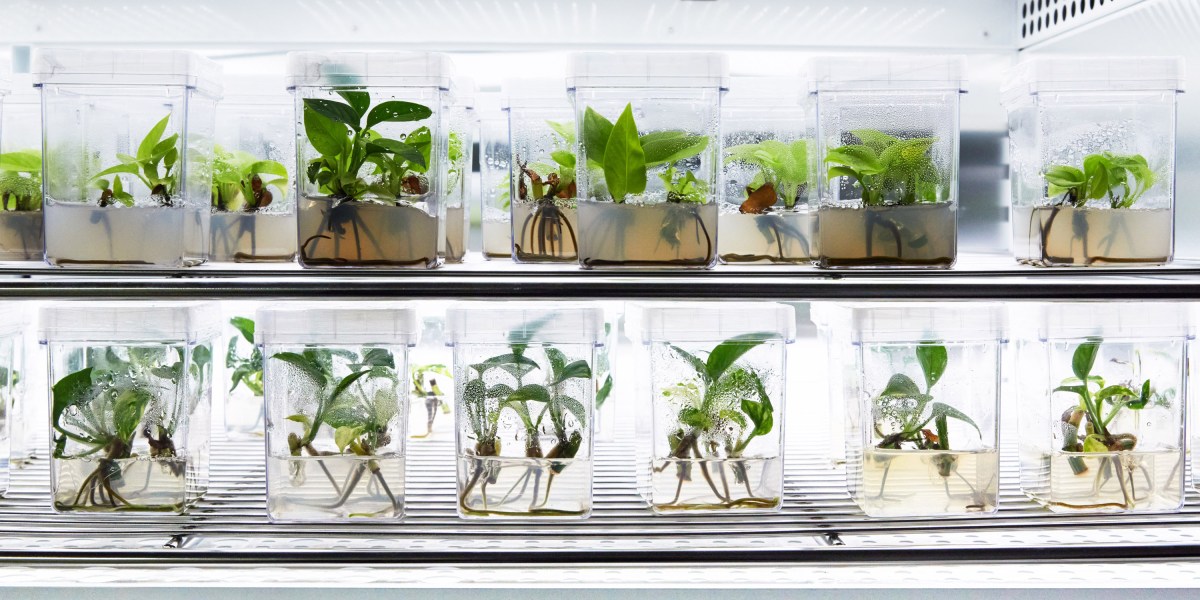The air-cleaning qualities of plants get a genetically modified boost

Neoplants’s marquee product, announced late last year, is the Neo P1, the first houseplant genetically engineered to remediate indoor air pollution. At first blush, this high-tech pothos—a tropical vine native to the Solomon Islands, also known as “Devil’s Ivy”—is indistinguishable from the real thing. It’s photogenic, fast-growing, and hard to kill. But unlike typical nursery stock, it also metabolizes indoor air pollutants missed by traditional air purifiers, which filter particulate matter: the volatile organic compounds (VOCs) produced by paint, gas stoves, and building materials.
“It’s actually a two-pronged approach,” explains Neoplants’s chief technology officer and cofounder, Patrick Thorbey. The first prong is the genetic engineering of the plant’s metabolism. By introducing additional genes into the plant, Thorbey’s Paris-based team coaxed the pothos to produce enzymes allowing it to use the VOCs it absorbs as carbon sources in its normal cellular metabolism. In a virtuous cycle, more air pollution only creates more plant matter and greater pollution-fighting capacity.
The second prong is bacterial. In a Neoplant, as in nature, microbes do the heavy lifting; two strains of symbiotic bacteria inserted into the Neo P1’s soil turn formaldehyde and the class of pollutants known as BTEX—benzene, toluene, ethylbenzene, and xylene—into harmless sugars and amino acids.
“I’ll be disappointed if there’s a plant on the moon and it’s not a Neoplant.”
“Bacteria are really important parts of most nutrient cycles,” explains Jenn Brophy, a Stanford researcher whose lab develops genetically engineered plants with greater resilience to climate change. “But microbiomes are very difficult to maintain. As soon as you ship a product to somebody, the viability of these bacteria declines.” This vulnerability seems to be Neoplants’s business model: the company will offer concentrated doses of proprietary microorganisms it calls “power drops” to maintain the plant’s air-cleaning efficiency. These will need to be applied monthly, much like replacing the filter in an air purifier. “Dyson, they sell their filters,” says cofounder and CEO Lionel Mora. “We sell microbiome.”
For now, the pothos itself is responsible for only about 30% of the Neo P1’s air-cleaning capacity—the microbiome handles the rest—but Mora and Thorbey expect that to change soon. It’s faster to improve on microbes than plants, they explain, so “the limits of what we can do with the plant are still far in front of us,” Mora says. “We are at the frontier of what is doable right now, but we see tremendous potential.”


